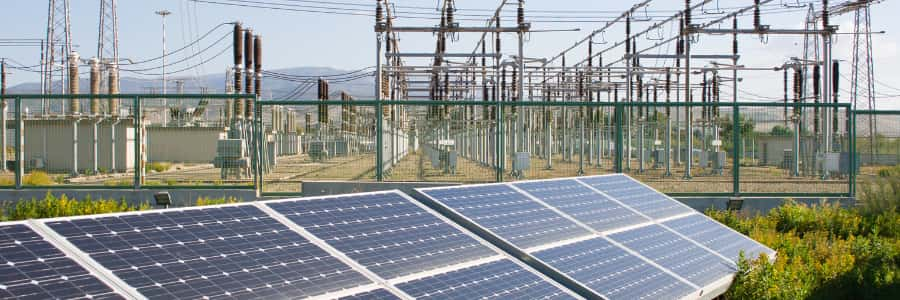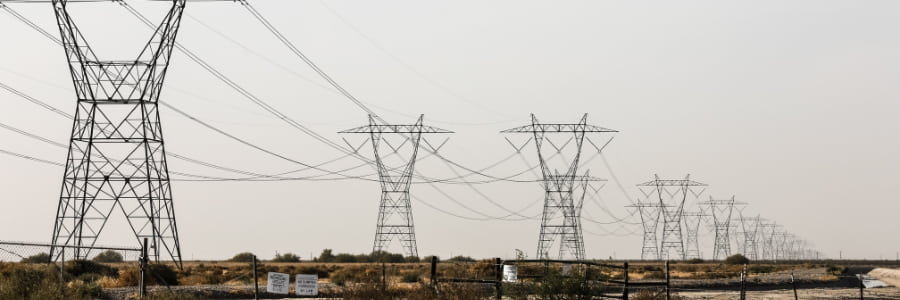Understanding the language of sustainability is crucial for everyone, but perhaps doubly so for energy and EV professionals.
For those working in these dynamic fields, fluency in sustainability-related terminology and the ability to communicate clearly with groups like energy consumers and EV owners are crucial for success.
This guide groups and unravels essential sustainability abbreviations and terms, seeking to empower readers to engage more deeply with the principles and practices that are paving the way towards a more sustainable future.

PHEV: A Plug-in Hybrid Electric Vehicle combines a traditional gasoline engine with an electric motor and a rechargeable battery.
BEV: A Battery Electric Vehicle is powered entirely by electricity stored in batteries.
ICE: Internal Combustion Engine vehicles are the traditional cars most people are familiar with, running on gasoline or diesel.
FCEV: A Fuel Cell Electric Vehicle runs on hydrogen gas rather than gasoline. They convert hydrogen into electricity to power the vehicle’s motor.
E-Mobility: Is also known as electric mobility. It refers to using electric power for transportation. This includes electric cars, scooters, buses, and bikes.
MPGe: The Miles Per Gallon Equivalent measures the efficiency of an electric or hybrid vehicle compared to an ICE vehicle. It shows how far a vehicle can travel on an amount of energy equivalent to a gallon of gasoline.
TCO: The Total Cost of Ownership is the total amount of money you’ll spend on a vehicle over its lifetime, including purchase price, fuel, maintenance, insurance, and resale value.
ZEV: A Zero Emission Vehicle produces no emissions from its tailpipes. This category includes electric vehicles like BEVs and FCEVs.

EVSE: Electric Vehicle Supply Equipment includes charging stations and equipment used to recharge electric vehicles.
DCFC: Direct Current Fast Charging is a method of quickly charging electric vehicles using direct current (DC) electricity.
AC: Alternating Current is the type of electricity that flows into homes and businesses. It’s the power you use when you plug in household appliances and is also used in some electric vehicle chargers.
CHAdeMO: Charge de Move is a standard for DC fast charging of electric vehicles, originally developed in Japan, that allows compatible cars to charge quickly at specific charging stations.
CCS: The Combined Charging System is a fast-charging method that combines AC and DC charging in one plug that can handle different types of electric charging.
kW: A Kilowatt is a unit of power that measures how much energy is being used at a given moment.
kWh: A Kilowatt-hour is a measure of energy that represents the amount of power used over a period of time. If you run a 1 kW appliance for one hour, it will consume 1 kWh of energy.
V2G: Vehicle-to-Grid technology allows electric vehicles to feed energy to the power grid. It’s like a two-way street for electricity, where your car can take and give energy, helping balance the grid and potentially earning you money or credits.
OCPP: The Open Charge Point Protocol is a standardised communication protocol. It functions like a common language that helps different EVs and charging networks talk to each other.
ASC: Advanced Smart Charging is a solution that automates and manages EV charging to make it more cost-effective and climate friedly for utilities and EV owners.

Renewable Energy Sources: Sometimes referred to as our future energy sources. They include PV (Photovoltaic), CSP (Concentrated Solar Power), wind energy, and hydropower.
PPA: A Power Purchase Agreement is a long-term contract between an electricity generator and a buyer, often involving renewable energy. It allows organisations to buy electricity at a fixed price for a stable, predictable power supply over many years.
FIT: A Feed-in Tariff is a policy that encourages the adoption of renewable energy by guaranteeing a set payment to producers for the electricity they generate and feed into the grid.
RECs: Renewable Energy Certificates are tradable certificates that prove a certain amount of electricity was generated from renewable sources.
LCOE: Levelized Cost of Energy is a standard for calculating the average cost to produce one unit of electricity over the lifetime of a power-generating asset, like a solar panel or wind turbine.
BESS: Battery Energy Storage System technology stores energy for later use. It’s like a giant rechargeable battery often used to store excess energy during sunny or windy days, ensuring a steady power supply.
REI: Renewable Energy Integration refers to solutions that help incorporate renewable energy sources into the existing energy grid.
Net Metering: Net metering is a system that credits solar energy system owners for the electricity they add to the grid
ESS: Energy Storage Systems store energy for later use. The term often refers to batteries but can also include many other types of energy storage, including hydro dams.

DER: Distributed Energy Resources are networks of smaller-scale electricity resources, including energy generation and storage, like solar panels or battery systems.
DERMS: A Distributed Energy Resource Management System provides the software-based platform for coordinating and optimising the use of DERs.
DR: Demand Response strategies and solutions encourage consumers to reduce or shift their electricity usage during peak demand times, often in exchange for incentives.
VPP: A Virtual Power Plant is a distributed energy resources network, like a collection of solar panels, EVs, Wind turbines, and batteries, coordinated using software to function like a single power plant.
Microgrid: A Microgrid is a local energy system that can operate independently or in conjunction with the primary power grid.
Smart Grid: Smart Grid is a term for advanced electricity networks that use digital technology to monitor and manage the flow of electricity, improving efficiency and reliability.
Peak Shaving: Peak Shaving solutions and strategies aim to reduce the amount of energy used during peak hours.
Load Balancing: Load Balancing (also known as load shifting) refers to strategies and solutions that help distribute electricity use more evenly across time and the power grid to ensure a stable and efficient energy supply.
DSM: Demand-Side Management covers strategies and solutions that help manage and reduce energy consumption during peak times. This can include incentivising customers to charge EVs during off-peak hours.
Smart Meters: Smart Meters can record energy consumption in real-time. They provide insights into energy use patterns, helping utilities and energy customers manage consumption more effectively.
CHP: Combined Heat and Power systems simultaneously generate electricity and useful thermal energy from the same fuel source.
PPP: Peaking Power Plants are power stations (most often fossil fuel-powered) that operate during periods of high electricity demand, known as peak times.

CSRD: The Corporate Sustainability Reporting Directive is an EU mandate requiring large companies to disclose environmental and social impact information.
ESG: Environmental, Social, and Governance are criteria used to evaluate commitment to sustainability and ethical practices, especially among companies and organisations.
RPS: A Renewable Portfolio Standard requires a certain percentage of a state or country’s energy to come from renewable sources like wind or solar.
ITC: The Investment Tax Credit is a federal US incentive that provides tax benefits to individuals and businesses investing in renewable energy projects, such as solar panels.
PTC: The Production Tax Credit (PTC) is a federal incentive that provides tax benefits to electricity producers based on the amount of renewable energy they generate.
GHG: Greenhouse Gases trap heat in the atmosphere, contributing to global warming and climate change. They include carbon dioxide, methane, and nitrous oxide.
GHGP: The Greenhouse Gas Protocol is a global framework for measuring and managing greenhouse gas emissions.
CDP: The Carbon Disclosure Project is a nonprofit organisation collecting and sharing data on companies’ environmental impacts.
TCFD: The Task Force on Climate-related Financial Disclosures recommends that companies disclose the financial risks and opportunities related to climate change.
GRI: The Global Reporting Initiative is an independent organisation providing sustainability reporting guidelines.
SASB: The Sustainability Accounting Standards Board develops industry-specific standards for companies to disclose financial material sustainability information.
MFA: Material Flow Analysis is a method for tracking the flow of materials and energy through a system, like a city or a company, to understand and improve resource efficiency.